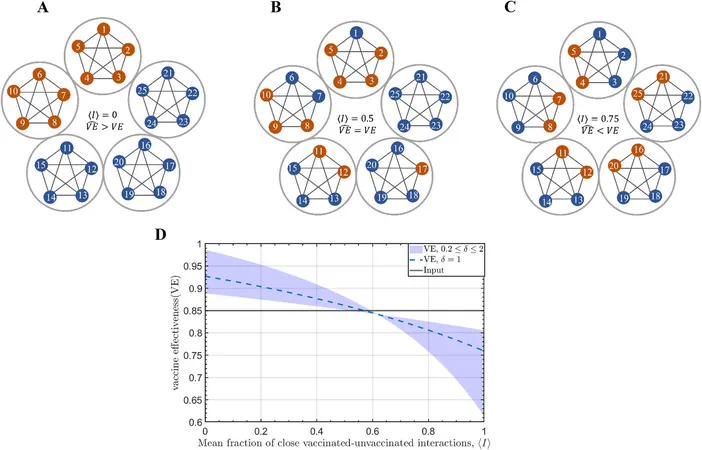
The Shocking Truth About Vaccine Effectiveness: Why Estimates Vary So Widely!
2025-07-01
Author: Jacob
A Pandemic’s Response: Vaccines to the Rescue!
Since the outbreak of the SARS-CoV-2 virus in late 2019, the global toll has been devastating, with millions of infections and deaths worldwide. As a response, scientists and pharmaceutical companies worked tirelessly to develop vaccines, rapidly producing options like those from Pfizer/BioNTech and Moderna, which claimed an impressive efficacy of around 95% during the early clinical trials.
Are Clinical Trials Misleading?
While these trials showcased high efficacy, they were conducted in controlled settings with limited sample sizes. This means the reported effectiveness might not translate to how vaccines perform in the diverse and complex real world. As mass vaccination initiatives rolled out in 2020, new data emerged, sparking a deeper investigation into vaccine effectiveness (VE) across various populations.
Two Approaches to Measuring Vaccine Effectiveness
Research into VE typically uses two different approaches: the Population-Based (PB) method and the Secondary Infections (SI) method. In PB studies, VE is often overstated at levels between 90% and 95%, while SI studies show concerningly lower effectiveness estimates of about 60% to 80%. This discrepancy raises questions about the reliability of current VE metrics.
Understanding the Discrepancies: What’s Different?
Key factors influencing these differences include the types of infections detected (mild versus severe), vaccine waning over time, and the emergence of new virus variants. Further complicating matters, observational studies in settings like nursing homes have yielded VE estimates ranging from 53% to 92%, reflecting variations even within similar demographics at the same time.
The Hidden Impact of Social Interactions
Interestingly, the interaction patterns between vaccinated and unvaccinated individuals seem to be largely overlooked in current research. When vaccinated individuals predominantly interact with other vaccinated people, the VE estimates may be inflated due to indirect protection, creating a false sense of security.
Unpacking the Complexity of Indirect Vaccine Effects
Vaccines aren’t just about individual protection; they also reduce overall transmission and shield entire communities. Studies from Sweden and Israel illustrate that as vaccination rates climb, infection rates among non-immune individuals decrease. These dynamics of indirect protection could significantly impact effectiveness estimates.
New Analytical Models Shine a Light on the Biases
In light of these disparities, researchers have developed new models that incorporate intricate community interactions, revealing how the mixing patterns of vaccinated and unvaccinated individuals can skew VE estimates significantly. These models encourage a reevaluation of how we assess and communicate vaccine effectiveness.
What Does This Mean for Future Vaccine Studies?
The findings suggest that the true effectiveness of the vaccines might be around 85%, not the higher figures typically cited. This has major implications not just for COVID-19, but for other vaccination campaigns too, emphasizing the need for a clearer understanding of social dynamics and their impact on public health.
In Conclusion: Rethinking Vaccination Effectiveness
The divergence in VE estimates reveals a critical need for more nuanced research taking into account the complexity of human interactions. By refining our measurement approaches, we can better assess vaccine performance, shape public health strategies, and ultimately protect communities more effectively. Let’s ensure future vaccine studies consider these insights to avoid misleading conclusions.









 Brasil (PT)
Brasil (PT)
 Canada (EN)
Canada (EN)
 Chile (ES)
Chile (ES)
 Česko (CS)
Česko (CS)
 대한민국 (KO)
대한민국 (KO)
 España (ES)
España (ES)
 France (FR)
France (FR)
 Hong Kong (EN)
Hong Kong (EN)
 Italia (IT)
Italia (IT)
 日本 (JA)
日本 (JA)
 Magyarország (HU)
Magyarország (HU)
 Norge (NO)
Norge (NO)
 Polska (PL)
Polska (PL)
 Schweiz (DE)
Schweiz (DE)
 Singapore (EN)
Singapore (EN)
 Sverige (SV)
Sverige (SV)
 Suomi (FI)
Suomi (FI)
 Türkiye (TR)
Türkiye (TR)
 الإمارات العربية المتحدة (AR)
الإمارات العربية المتحدة (AR)